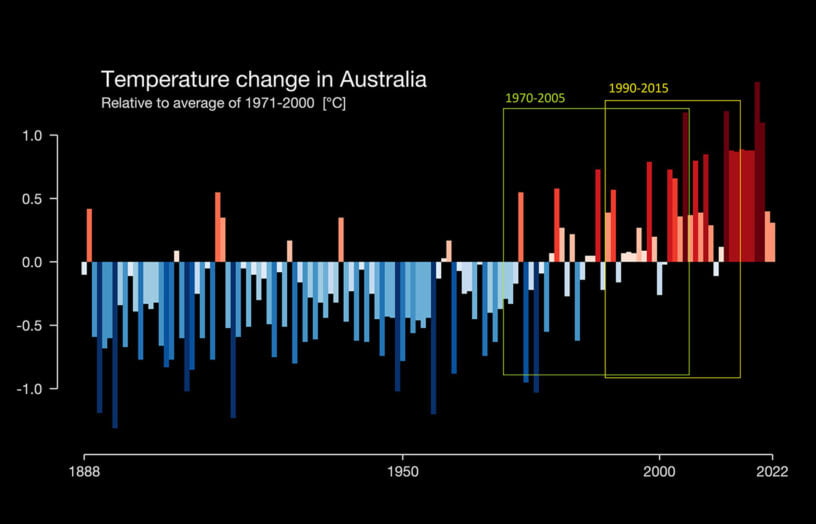Getting off gas FAQs

Do heat pumps work well in Australian conditions?
RACHEL GOLDLUST: Heat pumps basically move heat from one medium into another. They exchange heat between the air outside and the chemical refrigerant fluid inside the machine in a continuous cycle of evaporation, compression, condensation and expansion. Air-source heat pump hot water systems concentrate heat from the air and dump it into a water storage tank.
Good quality modern heat pumps for heating buildings and hot water will work everywhere in Australia. Heat pumps are in widespread use across far colder climates across Europe, North America and Japan. The efficiency does vary with climatic conditions, and some struggle in air temperatures approaching freezing and may use a resistive electric element to provide extra power in these conditions. If you live in an area that sees regular near-freezing temperatures, look for a system that will operate under such conditions without the need for a resistive element.
Even when the weather is cold outside, there is always heat energy in the movement of air molecules because our planet is heated by the sun and kept warm (compared to outer space) by our atmosphere. Heat pumps are designed to absorb that heat.
Heat pumps can be four or more times more efficient at heating air or water than standard resistive electric element heaters and even more so than gas that loses energy during combustion. Like reverse-cycle air conditioners, they heat the water by harvesting and concentrating external heat and can run at greater than 100% efficiency.
How much money can an all-electric household save?
RACHEL GOLDLUST: Australian households could be saving up to $5000 per year by replacing all major household appliances with energy efficient electric appliances, purchasing an electric bike and car, and generating renewable energy through rooftop solar.
To not be locked into rising gas costs, it’s best to make the transition to electric as soon as possible. Though the initial outlay may be high, with fossil fuel prices rising as they are, savings made for all-electric homes will continue to grow. With the anticipated rise of energy costs from the grid, increases for all-electric homes is at least half that of gas homes. Renters will face bill increases for space heating, but the impacts are significantly reduced with reverse-cycle air conditioning and insulation. As more people turn to all-electric households and appliances, the price of these will drop as it has with solar panels, batteries and electric vehicles.
Annual bills in 2022 for a 7-Star all-electric home with solar were 69%-83% less than a 3-Star home with gas appliances and no solar, depending on location. Savings on average per year for ditching the old gas heater in favour of a split system/reverse cycle air-conditioner (without solar panels) ranges from $256 in Perth, $440 in Adelaide, to $546 in Canberra and $409 in Melbourne. Heating a space with a reverse-cycle air conditioner is approximately four times more efficient than using natural gas.
Likewise, when thinking about water heating electrification, on the existing electricity grid, the cost is roughly halved when using a heat pump compared to a natural gas water heater. With the additional benefit of financed solar panels and a home battery providing the energy, the costs fall even lower, to around one-third of the gas heating costs.
Can we skip gas and go straight to zero-emissions electricity?
RACHEL GOLDLUST: Electrification of homes is already viable and cost-effective. Renew’s analysis has consistently showed that energy efficient, all-electric homes are already more cost-effective than standard dual fuel homes, and that converting an existing dual-fuel home to all-electric is almost always an economic benefit for households.
Large-scale electricity production technologies (wind, solar and hydro power and battery storage) are now cheap and reliable enough to replace coal and gas as the cleanest energy sources for buildings. Even for many other commercial and industrial applications that have traditionally depended on gas, we would be better off investing in new, clean technologies than maintaining or expanding the gas industry.
Heating, ventilation and air conditioning (HVAC) systems in larger commercial buildings can be run efficiently from electricity, with considerable advantages to be gained from onsite rooftop solar panels as the energy source, reducing demand on the national electricity grid.
The best way to run your home—for your wallet and for the climate—is to have all electric appliances and cars powered by clean electricity. It’s about half the running costs of a fossil fuel home and it will make a big impact on reducing our carbon emissions into the future.
How can “natural gas” be bad?
RACHEL GOLDLUST: It’s hard to see why anything that is called ‘natural’ can be harmful to us? But years of marketing has led to several misconceptions about gas. The primary component of fossil gas is methane, which is the main cause of global heating after carbon dioxide.
While most gas turns into carbon dioxide when it is burned, the gas industry leaks methane into the atmosphere through its whole supply chain—from gas mining fields to the transmission and distribution pipelines.
Gas used to be seen as clean energy, at least when compared with burning coal. However, gas is now largely extracted from coal seams and shale layers beneath agricultural land, sometimes using the highly invasive method of hydraulic fracturing or fracking. These methods can have significant environmental and agricultural impacts.
Since Australia has large deposits sitting right beneath our feet, we have also emerged as the world’s largest gas exporter, which has helped drive global emissions higher overseas, as well as locally. Gas contributes to the 33% of our total emissions that comes from burning fossil fuels to generate electricity. Coal contributes 62% of our total power, with gas coming in at around 20%.
Increasing research is also pointing to the potential harm of leaking methane from gas-burning stove tops. Whether your stove is being operated or not, the release of methane (CH4), carbon dioxide (CO2), carbon monoxide (CO) and nitrogen dioxide (NO2) into your home can make indoor air up to five times dirtier than outdoor air. Homes with gas stoves contain 50 to 400% higher concentrations of NO2 than those with electric stoves.
Further reading
 Efficient homes
Efficient homes
Building for a changing climate
Are we building homes for the future, or for the past? Rob McLeod investigates how climate change is impacting home energy ratings and the way we build our homes.
Read more Efficient homes
Efficient homes
Gas and our health
Dr Ben Ewald uncovers the health effects of gas in the home.
Read more

